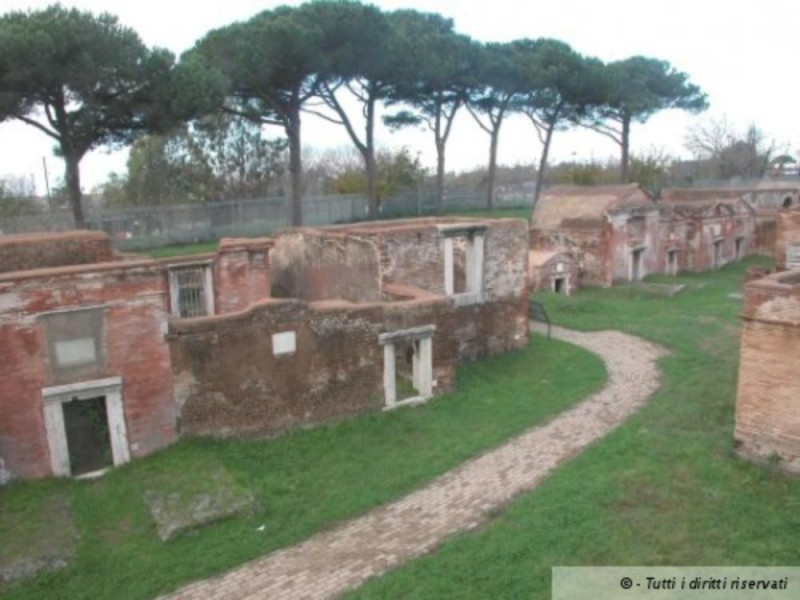Necropoli di Porto - Isola Sacra
The complex that currently allows the viewing of over 200 funerary buildings, known as the state-owned area of the necropolis of Porto, is the extreme southern limit of the settlement burial developed on either side of the Via Flavia Severiana, from the end of the first century AD, until the fourth century AD. The dynamics of occupation of the site confirm the importance of the road axis raised towards which the tombs, who first isolated form for the first progressive street front; follow advances that incorporate the crepidine road and construction of buildings along a second limited front. The last one constructive stage occludes the remaining space in the first face, that is built seamlessly. The tombs feature a homogeneous type: the cell, also on two floors, is basically a square, it often leans against a fence contemporary or later. The covers were barrel or terrace, with triangular pediment on the facade, moved by plinths, pilasters, columns and capitals that draw the curtain accurate brick on which open small windows and doors framed by thresholds, jambs and lintels in travertine. The value representing the facade is confirmed by the inscriptions (in Latin, more rarely in Geek), placed above the door frames by pumice and brick. The inscriptions bearing the name of the owner, the size of the tomb, the testamentary dispositions and the rules of use of the tomb, providing valuable data on the social composition of the population, composed mainly by traders, freedmen and small business owners. Precisely, in these activities and therefore, earthly identity of the deceased (the midwife attending the birth, the surgeon in place to operate, the manufacturer and retailer of hardware, the grain trader, etc.), refer scenes crafts - expression of a vital "popular" art - represented on the bricks on the sides of the registration. The external appearance of the tomb is not determined by the funeral rite chosen, the cremation or burial, which influences rather strongly to the internal breakdown by division into two registers of the wall: the upper niches for urns containing cremated, down to arcosolia buried; undergorund plans are reserved to the deposition and burial.

